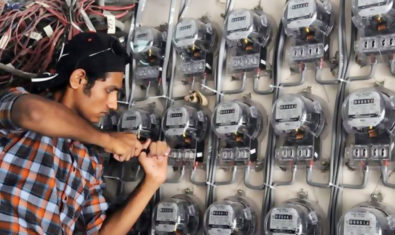Despite business challenges in various sectors of the economy, the banking sector remained consistent in major indicators as its assets surged to over Rs. 40 trillion by the end of June 2023.
According to the State Bank of Pakistan’s Mid-Year Performance Review of the Banking Sector, the banking sector managed to expand its asset base by 14 percent from January to June 2023 as compared to a similar period of the previous year.
This growth was mainly contributed by investments which constitute 52.7 percent of assets base, while growth in advances remained subdued, the report added.
On the funding side, the banks’ deposits increased by 14.2 percent during H1CY23 to Rs. 26.8 trillion by the end of June 2023. The banking sector also relied significantly on borrowings in order to finance the expansion of the assets base and meet the growing budgetary needs of the government.
The share of assets financed from borrowings marginally increased to 22.2 percent by the end of June 2023 from 21.9 percent at the end of December 2022. As a result of a strong inflow of deposits and weak momentum of advances, Advances to Deposits Ratio (ADR) declined to 45.0 percent from 50.4 percent in Dec-2022.
The private sector advances contracted while the public sector availed additional financing mainly for commodity finance operations. On the funding side, deposit mobilization witnessed a revival during H1CY23, however, banks’ reliance on borrowings remained noticeable due to stronger expansion in asset base.
The investments increased by Rs. 3.1 trillion to reach Rs. 21.5 trillion while advances grew by Rs. 241 billion to reach Rs. 12.95 trillion during the second half of 2023.
The profitability indicators of the banking sector improved during the first half of 2023. The after-tax ROA rose to 1.5 percent (0.8 percent in H1CY22 and 1.0 percent in CY22) while ROE enhanced to 26.0 percent from 12.9 percent in the corresponding period of last year. The major push to earnings came from higher net interest income, as the rising interest rates translated to higher earnings while non-interest income also augmented the bottom line during the reviewed period.
It is noteworthy that banks’ investment portfolios, which mainly comprise government securities, have been steadily increasing for the last few years due to the government’s increased reliance on bank credit to finance its budgetary needs.
Banks Investment in Government’s Securities
By the end of June 2023, the share of total investments and government securities in the banking sector’s asset base reached 52.7 percent and 49.6 percent, respectively.
Further analysis indicates that the increase in investments during H1CY23 was almost entirely driven by government securities: investments in the Market Treasury Bill (MTBs) and Pakistan Investment Bonds (PIBs) increased by Rs. 1.6 trillion and Rs. 1.0 trillion, respectively.
The auction statistics of government securities reveal that banks offered higher amounts in MTBs and floating rate PIBs, during H1CY23.9 This offer pattern of banks in general was consistent with the government’s auction and acceptance strategy which preferred to borrow against MTBs and floating rate PIBs. However, from an offer-to-target ratio standpoint, banks’ bidding was highest for fixed-rate PIBs (1.8 times), followed by MTBs (1.4 times) and floating-rate PIBs (1.3 times)
Future Outlook
The performance of the banking sector in the second half of 2023 depends on the operating environment and evolving policy stance. The macroeconomic environment remains challenging primarily due to subdued economic activity and elevated inflation.
The banking sector is expected to continue its steady performance. A major expansion in the balance sheet is likely to be driven by investments owing to the expected borrowing needs of the government.
Advances are also expected to post their seasonal uptick towards the end of CY23, as credit demand from sectors such as textiles and sugar increases in the last quarter of 2023.
Overall economic stabilization policy to contain aggregate demand and stressed financial conditions could involve credit risk concerns for banks, however, banks’ asset quality is likely to remain firm, as their major lending is tilted towards corporate borrowers which have better creditworthiness and cushions to withstand economic shocks.
However, the banking sector’s exposure to the government remains high which demands earnest measures to reduce the reliance on the banking sector for fiscal needs. The results of the latest macro stress tests also suggest that the banking sector, in general, and the large systemically important banks, in particular, are expected to show resilience to withstand assumed severe macroeconomic shocks over the projected period of two years.



























